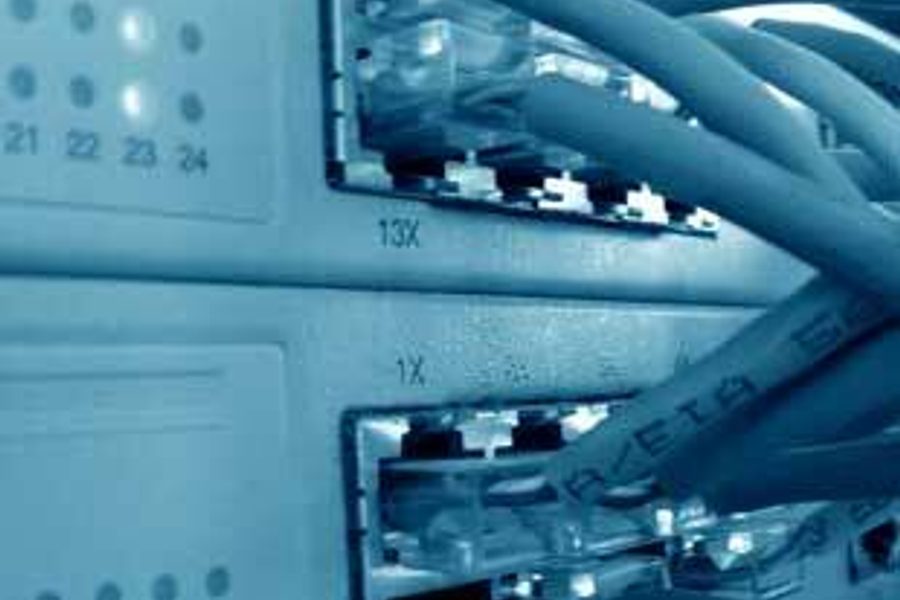
Few people blink these days when some Chicken Little somewhere announces that the virtual sky is falling. The Internet has long been subject to such dire pronouncements, and no doubt both Turkey Lurkey and Henny Penny have set up blogs to give new life to old predictions. But when Chicken Big sounds worried (and in the online world, the poultry doesn’t get much bigger than Amazon.com), it’s time to listen.
Such is the case with the current battle over the regulatory status of broadband Internet, now before the Supreme Court in the form of the National Cable & Telecommunications Association v. Brand X Internet Services. Oddly named and replete with narrow legal distinctions — — “Brand X” is the Santa Monica-based Internet service provider that was refused access to cable’s broadband platform, and the case turns on whether Internet-over-cable is classified as an “information service” or a “telecommunications service” — the stakes in the case, at least, are clear. In the words of FCC Commissioner Michael Copps, “This battle is over the future of the Internet.”
That future will be bleak indeed if the high court reverses a lower court ruling that classified cable modems as a telecommunications service, and thus subject to the same “open access” regulations that made the dial-up Internet such a diverse and competitive environment.
In their heyday, some 7,000 Internet service providers plied their trade over traditional phone lines. Today, in contrast, many communities are limited to an either/or choice of just two broadband service providers — the monopoly cable company or the local telephone giant. The Brand X case could well determine whether the high-speed Internet of the future will look more like the open online environment of the past, or the closed cable platform of the present.
In his testimony before the House Subcommittee on Telecommunications and the Internet in July 2003, Paul Misener, Amazon’s vice president for global public policy, offered a sobering glimpse of that potential future of closed broadband networks:
Although perhaps subtle at first, the resulting change to the fundamental character of the Internet would be nothing short of radical and tragic. No longer would Americans be able to obtain for free or purchase all the myriad content they have grown accustomed to receiving at home. The Internet would metamorphose from being the ultimate “pull” medium, in which consumer choice is paramount, to being yet another cable TV-style “push” medium, where gate-keeping service providers decide what content Americans are allowed to obtain. By destroying unimpeded connectivity, the anti-competitive exercise of market power by a handful of broadband service providers would do to the Internet what even a nuclear strike could not.
Misener’s remarks may sound a little too melodramatic, but most observers agree that the battle over “open access” — as that term has traditionally been defined (involving our right to choose among innumerable Internet service providers) — pales before the battle of “network neutrality,” which involves the control of broadband networks, particularly the vital “last-mile” connections to our homes. For better or worse, those connections are largely controlled by cable companies, which command a two-thirds share of the broadband market. Under existing FCC rules, which classify cable Internet access as an unregulated “information service,” cable companies are free to operate their data networks in the same top-down, monopolistic fashion as they manage their video service.
The danger now is that the FCC, in pursuing its decidedly market-driven goals — “the development and deployment of broadband infrastructure is the central communications policy of the day,” it claims — will effectively render content diversity as endangered a concept as ISP choice.
So while the Brand X case may seem like just another industry tussle, at its heart is something much more profound: the principle of common carriage that has long governed systems of transportation and communications. In other words, the notion that such networks must serve all potential users.
Today, that principle is seen most clearly in the operation of telephone networks, which can neither bar particular callers nor forbid particular messages. It is also the underlying tenet of the dial-up Internet. The explosion of the World Wide Web in the ‘90s (when a simple URL could take you anywhere, and anyone could launch a site) was rooted in the basic nondiscriminatory, common carrier nature of the Internet. But that expansive era may now end just as the Internet itself, ironically, has entered a new high-speed phase of operation, with dial-up modems giving way to broadband connections.
In the absence of common-carriage protections, as the ACLU explained in its Brand X brief to the Supreme Court, “cable companies can leverage ownership of the physical infrastructure into control of citizens’ access to and use of the Internet. This threatens free speech and privacy. A cable company that has complete control over its customers’ access to the Internet could censor their ability to speak, block their access to disfavored information services, monitor their online activity, and subtly manipulate the information sources they rely on.”
And that, needless to say, would be the unhappiest of endings to the story of the Internet, the network once described by the courts as “the most participatory form of mass speech yet developed.”
A decision in the Brand X case is expected early this summer. For more information on the case and the issues behind it, visit the Center for Digital Democracy’s “Brand X Files”.





